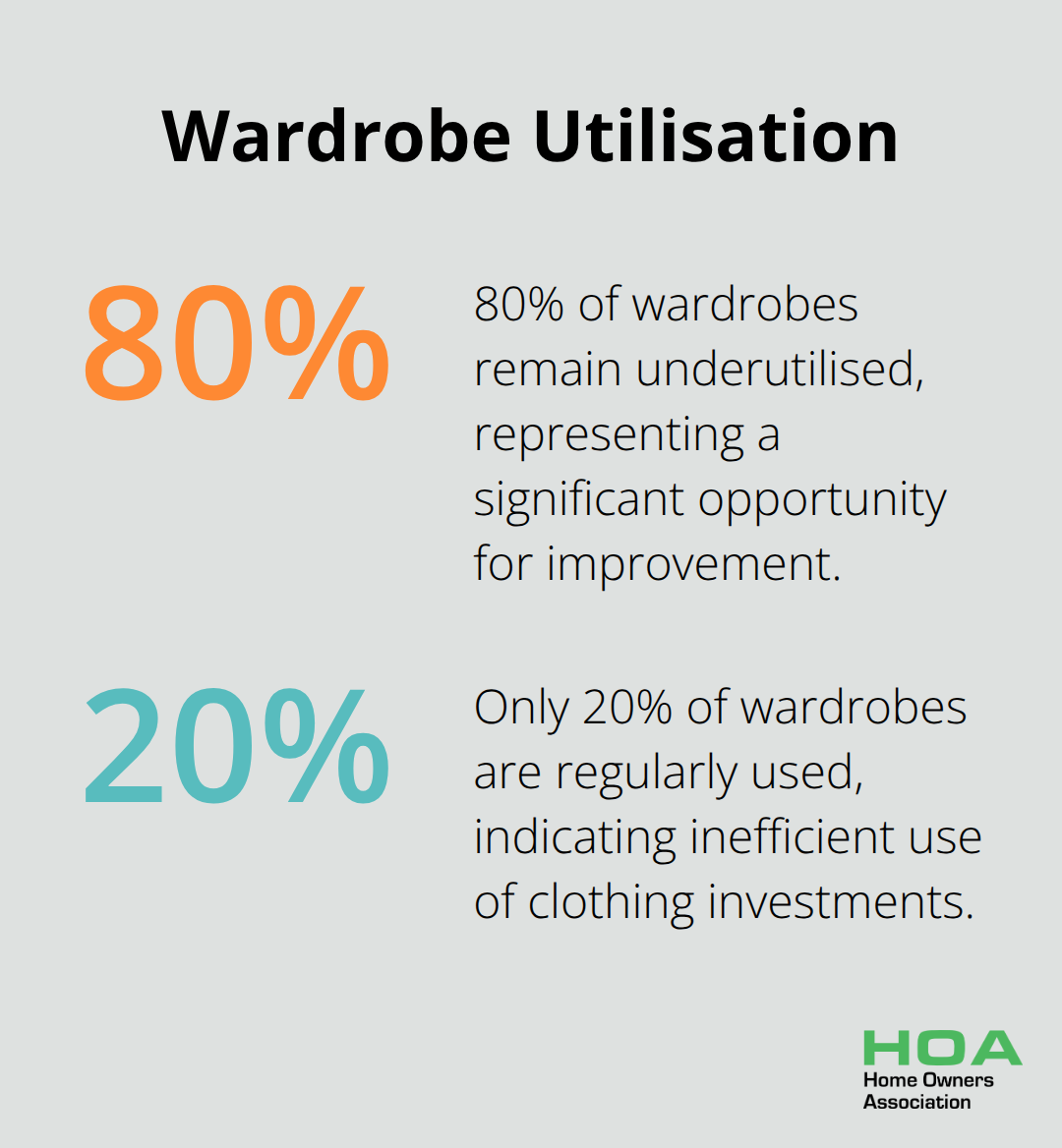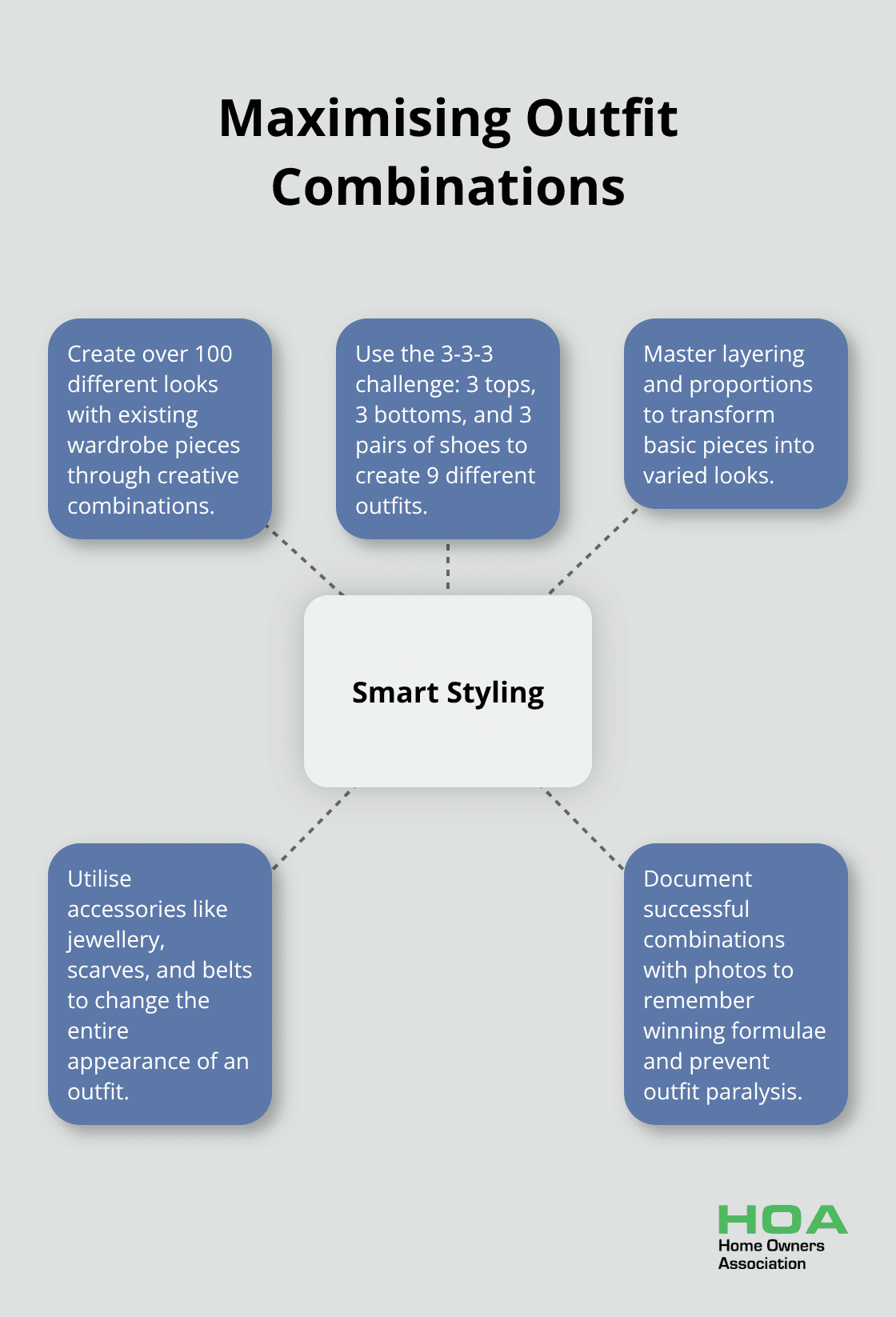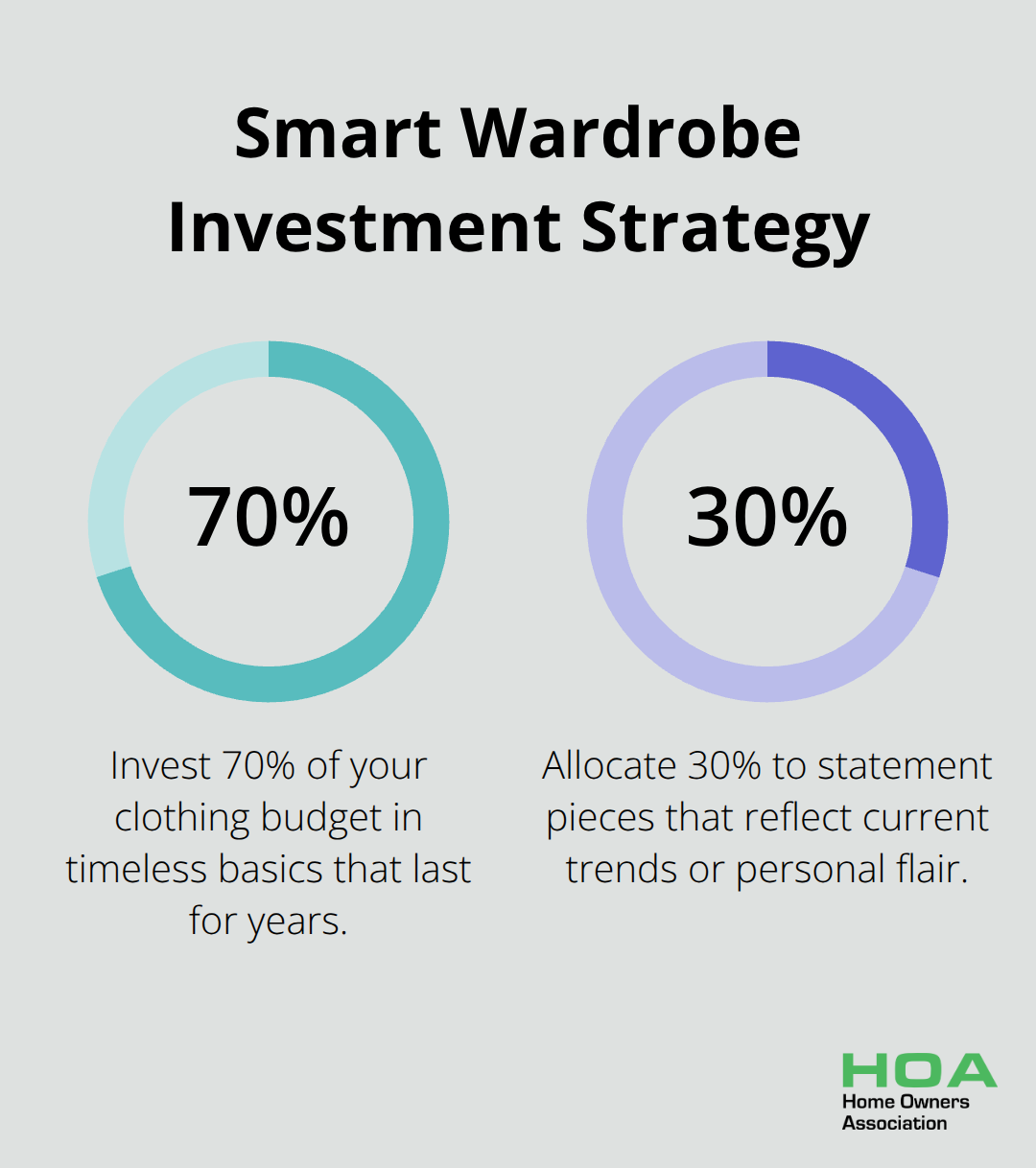
Your wardrobe holds untapped potential that most people overlook. The average American spends $1,700 annually on clothing, yet 80% of wardrobes remain underutilised.
We at Home Owners Association believe smart wardrobe renovation ideas can transform your style without breaking the bank. Strategic refreshing beats constant shopping every time.
Assess Your Current Wardrobe
Transform your wardrobe assessment into a strategic operation that saves both money and time. Start with the harsh reality check: remove every single item from your wardrobe and drawers. This complete process forces you to confront pieces you’ve forgotten and creates space for objective evaluation. An estimated 60% of people find themselves wearing only 20% of their clothing regularly, which means 80% of your investment sits dormant.

The Three-Pile System That Works
Create three distinct piles: keep, donate, and alter. The keep pile should contain items you’ve worn within the past 12 months that still fit properly and make you feel confident. Studies show that a clutter-free environment reduces stress, boosts focus, and enhances decision-making by lowering cognitive overload. The donate pile captures anything unworn for over a year, items with permanent stains, or pieces that no longer reflect your lifestyle. The alter pile holds garments with potential that need professional work or simple modifications.
Find Your Wardrobe Gaps
After you sort, analyse what remains with the work-weekend-occasion framework. Count your work-appropriate pieces, casual weekend wear, and special occasion outfits. The ideal ratio varies by lifestyle, but most professionals need roughly 60% work clothes, 30% casual pieces, and 10% special occasion items. Note what basics you lack like well-fitted jeans, white shirts, or versatile blazers. Document gaps in a phone note to guide future purchases and prevent impulse buys that don’t serve your actual needs.
Map Your Style Evolution
Your current wardrobe tells the story of who you were, not necessarily who you are now. Separate items that reflect your current lifestyle from those that represent past versions of yourself. Career changes, weight fluctuations, and lifestyle shifts all impact what works in your wardrobe. Professional stylists recommend this exercise every six months to maintain wardrobe relevance.
Once you understand what you actually own and what you truly need, you can explore creative ways to maximise every piece that made the cut.
Creative Ways to Refresh Existing Pieces
The secret to wardrobe transformation lies in strategic styling, not constant shopping. Research from Into-Mind shows that the average person wears the same 20 outfit combinations repeatedly, despite owning enough pieces to create over 100 different looks. Start with the 3-3-3 challenge: select three tops, three bottoms, and three pairs of shoes to create nine completely different outfits. This exercise forces creative thinking and reveals hidden potential in your existing pieces. Professional stylists use this technique to help clients see their wardrobes differently, proving that variety comes from smart combinations, not quantity.

Master the Art of Layering and Proportions
Transform basic pieces through strategic layering that changes their entire appearance. Wear a fitted turtleneck under a sleeveless dress to create a completely new silhouette, or layer a button-down shirt under a jumper with the collar and cuffs visible. Understanding outfit proportions makes the biggest visual impact: pair wide-leg pants with fitted tops, or balance oversized blazers with slim-fit bottoms. Add statement jewellery, scarves, or belts to shift focus and create fresh looks from the same foundation pieces. Fashion Week stylists consistently demonstrate that accessories change everything – a simple white shirt becomes formal with pearls and sophisticated with chunky gold jewellery.
Strategic Alterations That Pay Off
Professional tailoring transforms mediocre pieces into wardrobe stars. Hemming pants to the perfect length, taking in waistbands, or shortening sleeves costs $15-50 per alteration but delivers results equivalent to buying new clothes (often at a fraction of the cost). Cropping oversized shirts creates modern proportions, whilst adding darts to loose-fitting dresses improves the silhouette dramatically. Simple DIY alterations work too: cut jeans into shorts, remove shoulder pads from vintage blazers, or shorten long cardigans. The 2017 WRAP report examined the environmental impact of the UK clothing industry, making alterations a smart investment strategy for both environmental and financial benefits.
Mix and Match Like a Pro
Create outfit combinations that feel completely new without buying anything. Take one blazer and style it five different ways: over a dress for work, with jeans for casual Friday, tied around your waist for a 90s vibe, draped over shoulders for evening elegance, or worn open as a light jacket. Document successful combinations with photos (this prevents morning outfit paralysis and helps you remember winning formulae). Professional stylists recommend this approach because it maximises cost-per-wear while developing your personal aesthetic. Smart shopping strategies build on this foundation of creative styling to add targeted pieces that multiply your options exponentially.
Smart Shopping Strategies for Wardrobe Updates
Strategic shopping requires ruthless selectivity and mathematical thinking about cost-per-wear ratios. The average person wears each item only 7 times before it gets forgotten, but smart shoppers focus on pieces that work at least 30 different ways across multiple seasons. Target trans-seasonal items that layer effectively: lightweight wool jumpers, structured blazers, and quality denim work year-round with strategic styling. Versatile pieces like white button-downs, black pants, and neutral cardigans form the backbone of endless outfit combinations. Fashion industry data shows that 10 high-quality versatile pieces generate more outfit options than 30 trendy items that only work in limited scenarios.
Shop Your Wardrobe First Every Time
Before you purchase anything new, spend 30 minutes to create five completely different outfits with only existing pieces. This exercise reveals hidden gems and prevents duplicate purchases that waste money and wardrobe space. Professional stylists use the one-in, one-out rule: donate something every time you buy something new to maintain wardrobe balance and prevent accumulation of unworn items. Take photos of successful outfit combinations to reference later and avoid morning decision fatigue. Extending clothing life by just nine months through better utilisation saves billions in resources while reducing environmental impact and saving hundreds of dollars annually.
Quality Basics Beat Trendy Additions
Invest 70% of your clothing budget in timeless basics and 30% in statement pieces that reflect current trends or personal flair. Quality cotton shirts, well-fitted jeans, and classic blazers last 5-10 years with proper care, whilst trendy items typically lose appeal within 12-18 months. A $200 wool coat worn 100 times costs $2 per wear, whilst a $50 synthetic coat worn 20 times costs $2.50 per wear (plus replacement expenses). Choose neutral colours for expensive pieces and add personality through affordable accessories like scarves, jewellery, and shoes that transform basic outfits without major investment.

Focus on Cost-Per-Wear Mathematics
Calculate the true value of each purchase before you buy. Divide the price by the number of times you realistically expect to wear the item. A $150 dress worn twice costs $75 per wear, whilst a $150 blazer worn 50 times costs $3 per wear. This simple calculation prevents expensive mistakes and guides smart investment decisions. Quality pieces with higher upfront costs often deliver better long-term value than cheap alternatives that need frequent replacement. Shop during sales events to maximise your budget when investing in these quality basics.
Final Thoughts
Regular wardrobe refreshes deliver measurable financial and psychological benefits that compound over time. The 80-20 rule proves most people waste money on clothes they rarely wear, but strategic wardrobe renovation ideas maximise every piece you own. Studies show organised wardrobes reduce stress by 40% whilst they boost confidence throughout the day.
Smart wardrobe management requires you to treat your wardrobe like an investment portfolio. You calculate cost-per-wear ratios, prioritise versatile pieces, and maintain quality through proper care and strategic alterations. The most successful approach combines creative styling with selective shopping (this creates maximum outfit variety from minimum pieces).
We at Home Owners Association understand the value of strategic improvements that deliver long-term benefits. Just as smart home improvements add lasting value to your property, thoughtful wardrobe curation creates lasting style that reflects your authentic self. Your wardrobe should evolve with your lifestyle, career changes, and personal growth rather than follow every trend.





